ROUGH NOTES AND BRIEF
DESCRIPTION OF THE PROJECT SO FAR
( These are very very rough notes
on how I converted a Russian Dnepr and sidecar to run on LPG. Hopefully one
day I'll have enough time to update these pages so they are more informative
and helpful)
Several months ago I bought a LPG kit with out any real plan as to what I would
do with it until last weekend (December 2005) when I had the brain wave of fitting
it to my Russian Dnepr motorcycle. There are several problems with the idea
that needed to be worked around before it would work successfully.
These are basically
1) Carrying the fuel.
2) No specific kit for the engine.
3) The engine is air cooled.
I'll explain how I overcame these three problems individually.
1) Carrying the fuel.
The first and easiest to answer is carrying the fuel. This is no real problem
as I have a sidecar on the bike and the tank I have fits conveniently in the
boot compartment. The tank I have is from a caravan for fuelling a cooker, so
apart from being small it has the necessary filler attachments, 80% cutoff and
the all important blowout valve. The only real difference with this tank is
that it is a vapour take off rather liquid but this turns out to be a benefit
rather than a hindrance as explained below.
2) No specific kit for the engine.
This is not so much of a problem as most LPG kits are generally universal apart
from the venturi mixer that sits on the carb. These are usually like an inverted
gas hob and made to fit the carb and air filter and are unsuitable for a Russian
motorbike So I made my own ventrui mixer. You can see how I made it in the photos
below. The calculations and planning this are minimal, if not non-exsistant,
and are of the "If it looks right then it is probably not far off"
design methodology.
3) The engine is air cooled.
This is not as serious as first thought, (forget all this it is not relevant any more)
especially if you have no previous
knowledge of LPG systems and how they work. The problem is that a normal vaporiser
fitted to a car is warmed using the hot water circulating around the engine
cooling system however there is no water system on the Dnepr as the engine is
air cooled. This supply of hot water is needed because as the LPG vaporises
it chills so without this heat the vaporiser will quickly freeze up and stop
working so an alternative solution is needed. I considered wrapping a copper
tube around the exhaust pipe and running water through it to the vaporiser
to heat it like that. I even considered using an electrical heater to keep it
warm until I worked out how much electrical power I needed and the idea was
quickly abandoned. Eventually I took the fuel consumption of the engine and
compared it to the medium sized propane powered space heater and was surprised
to discover that they were very similar. So this left me thinking - A space
heater can run all day without the unheated regulator freezing up so why not
a LPG regulator for an engine. Admittedly the gas bottle of a space heater gets
a bit frosty but at least it carrys on working. This leads to two sub problems.
The first being that all LPG automotive fuel tanks have a liquid take off and
the evaporation takes place in the regulator and the portable gas bottles used
with space heaters that have a vapour take off and the vaporisation takes place
in the gas bottle. This is conveniently easy for me to overcome because my LPG
tank is from a caravan and was for supplying things like cookers and so has
a vapour take off so I have no problem there. The second sub problem is that
an automotive LPG regulator is designed to take a liquid supply and I'll be
feeding it with a vapour supply. My answer to that is to simply ignore this
difference and carry on with the conversion.
Seriously, its not that much of a problem. I made a better job of getting around this in the BMW conversion.
PICTURES

Fig. 1. 10mm steel tube that are going to be the mixer inlets.
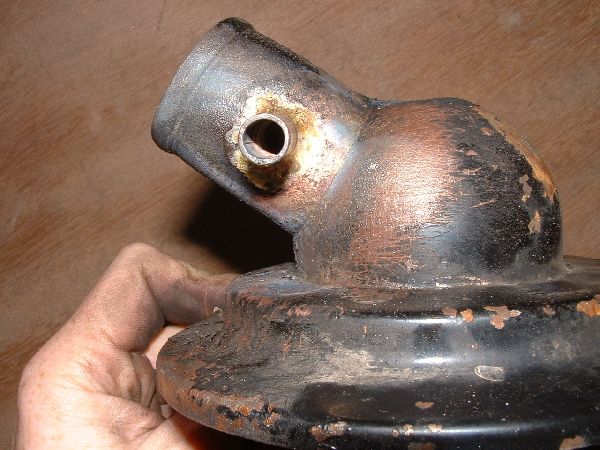
Fig. 2. 10mm steel tube brazed into place

Fig. 3.
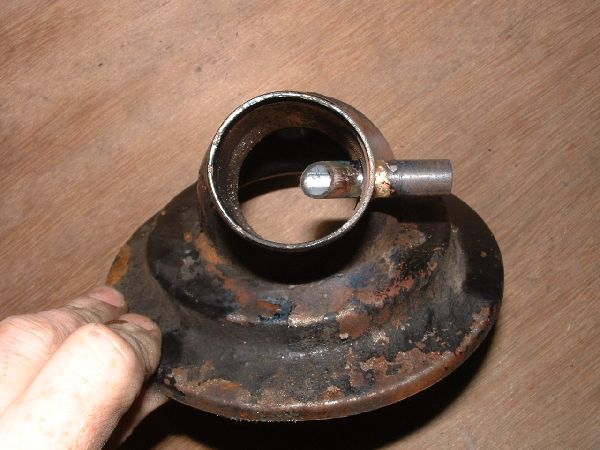
Fig. 4. Showing orientation of cutoff to encourage gas flow from the mixer
inlet
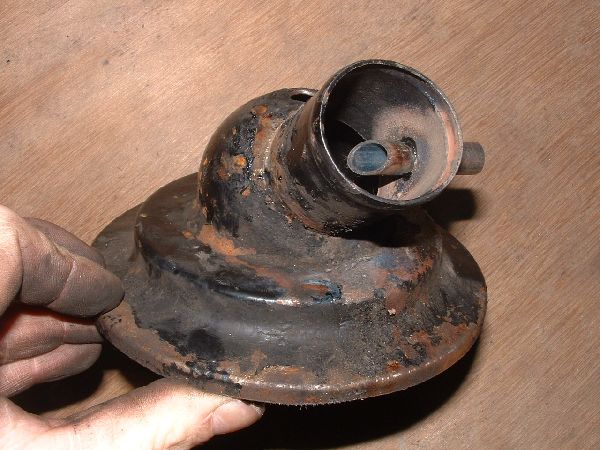
Fig. 5.
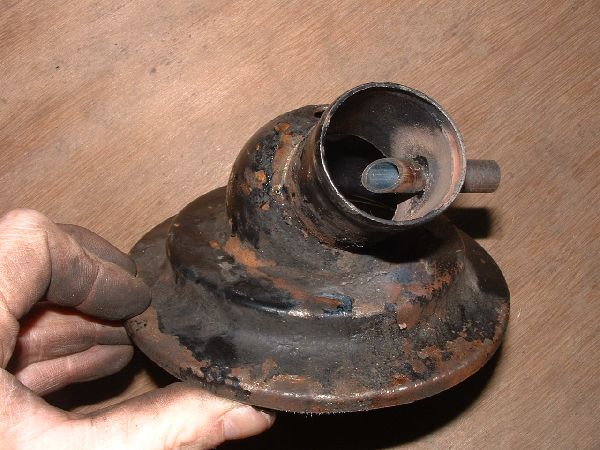
Fig. 6.
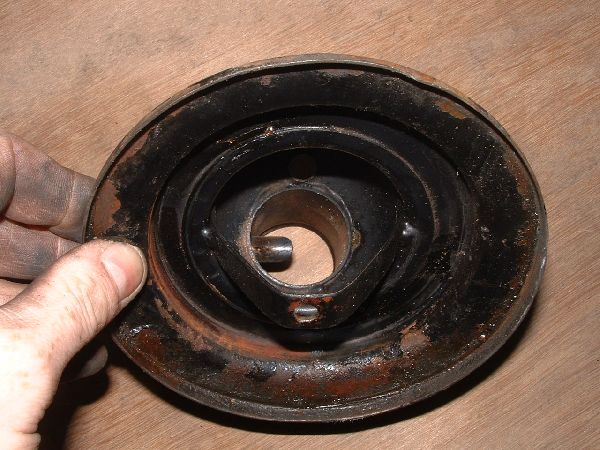
Fig. 7.
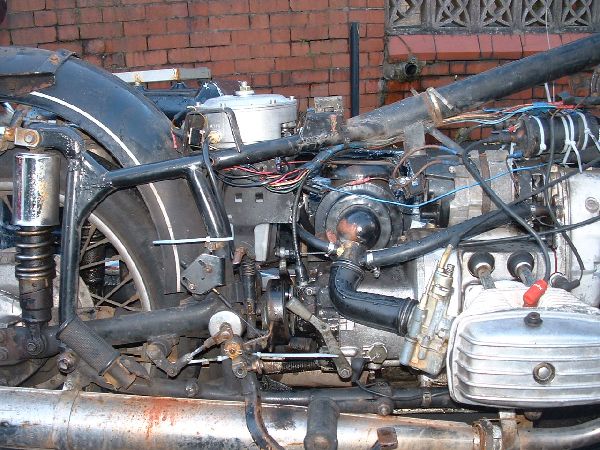
Fig. 8. Location of vaporiser (shiny thing) under the seat.

Fig. 9. Close up of mixer in position and tube attached. Larger tube is engine
breather, Smaller tube is LPG feed from vaporiser.
UPDATES
UPDATE (April 2006)
I've probably done 2000 miles on LPG
and all is well with the engine. I've not been thorough enough to make any accurate
estimates of fuel economy but it costs about £6 or about 14L to do about
100 miles.
There is no noticeable performance
difference between petrol and LPG.
The Dnepr is not equipped with an
electric start so its the kick or a push to get it going. But kicking the engine
over does not put enough demand onto the vaporiser for it to start working
so the only way of getting it to start unaided is to get the engine spinning
by bump starting it. I live on a hill so this is OK for setting off on a journey
but not always convenient or possible any other time. However if I first 'prime'
the vaporiser by poking my finger through the vent hole onto the diaphragm
so it leaks a bit of propane into the carbs and then give a solid kick to it
there is the slim possibility that it will start, but not always.
Changing from Petrol to LPG is a bit
of a pain due to the float bowls taking a good time / distance to drain allowing
the switch over. This is almost impossible to do in town traffic as a bit of
momentum is needed to keep the engine spinning during the 'spluttery' changeover
period. However it is no problem on the open road or where the bike is above
about 30 mph. Similarly you have to wait for the float bowls to fill before
running on petrol again and if you stall in traffic it can be a problem.
Normal every day riding is fine and
trouble free.
When I'm on the motorway or riding
hard for about an hour the tank does chill a lot and is often covered in ice.
I've measured the temperature of the tank and seen it below -15°C however
there is still enough vapour pressure to work the vaporiser. On very
long motorway journeys the chill is more and I loose top end power and have
even resorted to running on petrol whilst the tank warms. (see the BMW conversion)
UPDATE (May 2006)
The Dnepr engine is no more. The gear
to the cam shaft lost some teeth and the engine is now written off as un repairable.
However I have a BMW R80 engine in bits in a box in the attic and I think this
is an opportune moment to get it running and installed into the Dnepr frame.
The BMW engine is electric start, YAY!.
(The amount of people I know who gently
mock me about it being the LPG that caused the failure is tediously annoying.)
UPDATE (August 2006)
After much work with an angle grinder,
welder, a selection of big hammers and plentiful cups of tea I've managed to
fit a BMW R80 engine to the Dnepr. Not just the engine as is the common conversion
but the whole power train - engine, gearbox, final drive transmission and rear
wheel. There is a whole story of problems surrounding this conversion that I
decline to tell here. Needles to say the engine is running on LPG.
UPDATE (September 2006)
Probably clocked up close to 1000
miles on the BMW-Dnepr and all is fine, the welded together bits have not become
separated and the rebuilt engine is still running as it should. The LPG conversion
is also operating as it should and I'm getting better MPG from it than the Dnepr,
which is odd as the BMW engine is 150cc bigger, so apart from going a bit further
for each fill the tank is chilling a bit less so the icing problem is hardly
significant, even on long hauls on the motorway. The electric start is simply
fantastic and makes starting on LPG easier. Most days it fires up after 8 to 10 revolutions of the engine and it starts almost immediately when the engine is warm.








